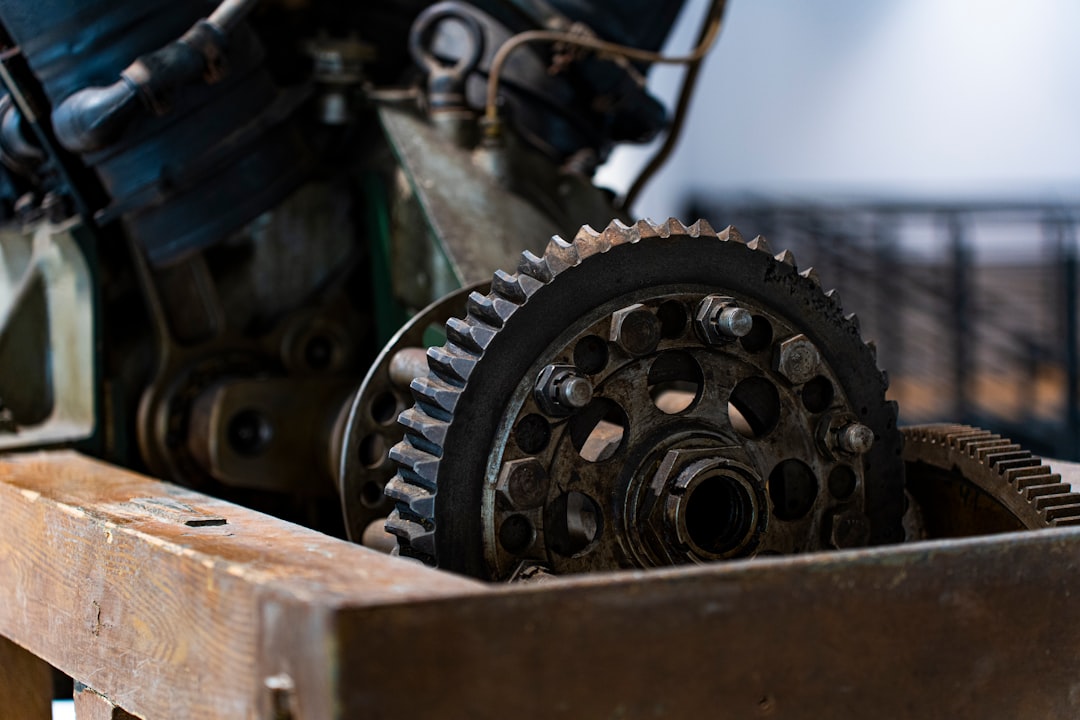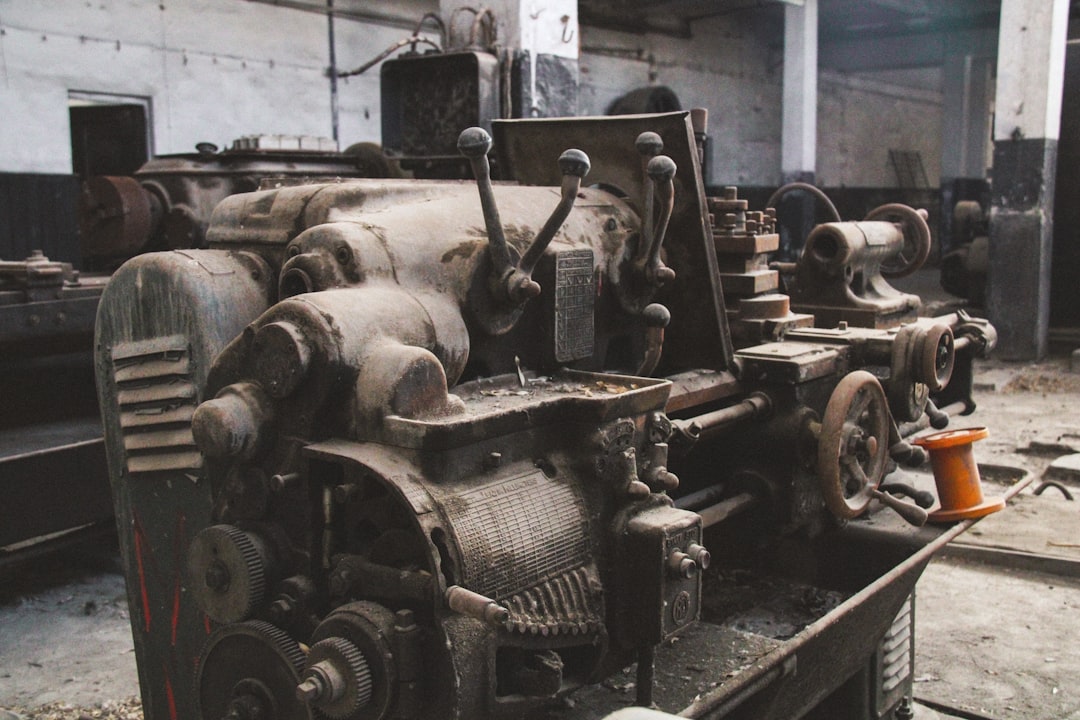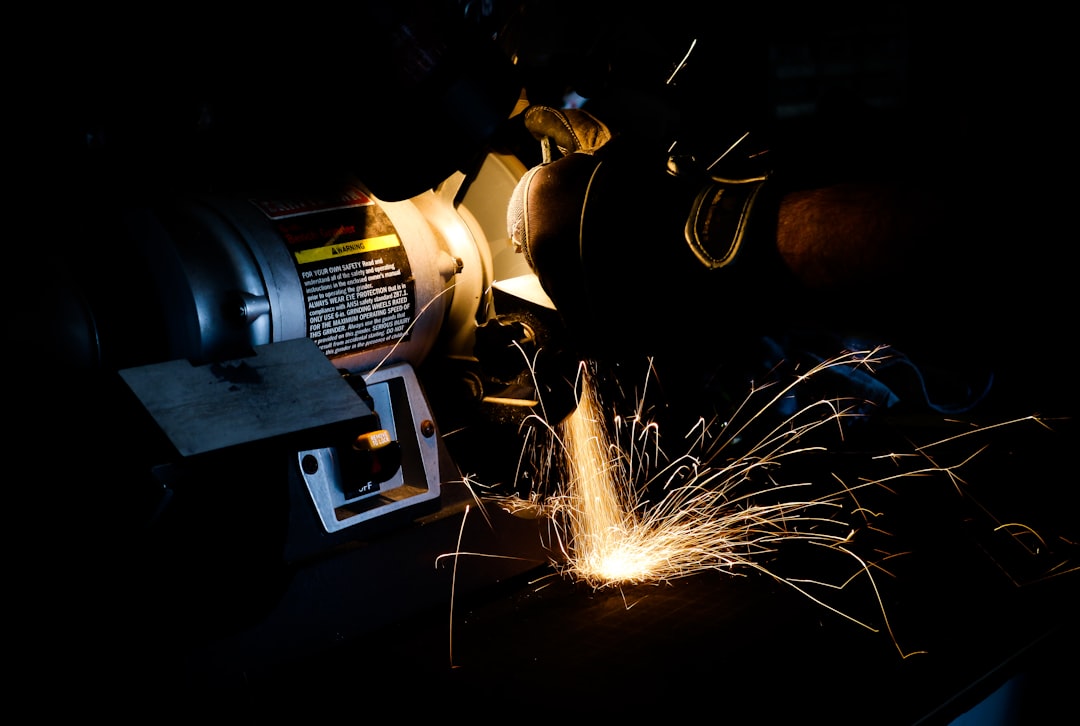

Engage prospects with a scan and streamline customer engagement with FREE QR code marketing tools by Sona – no strings attached!
Create a Free QR CodeFree consultation

No commitment

Engage prospects with a scan and streamline customer engagement with FREE QR code marketing tools by Sona – no strings attached!
Create a Free QR CodeFree consultation

No commitment
Across industrial machinery repair services, minimizing equipment downtime and maximizing operational efficiency is critical. Persistent challenges such as missing high-value service requests, fragmented records, and a lack of unified data tracking often lead to lost opportunities and longer repair cycles. Businesses struggle to streamline maintenance workflows, keep account data accurate, and surface actionable engagement signals in time to prevent equipment failure or customer churn.
In today’s digitally driven manufacturing environment, QR codes have moved beyond simple convenience and now serve as a crucial link between physical assets and digital workflows. For industrial machinery repair services relying on manual processes and facing communication gaps, QR codes offer a fast, flexible, and user-friendly way to connect technicians and operators on the shop floor to essential documentation, service records, and real-time diagnostics, without the need for app downloads, complex IT rollouts, or specialized training.
By embedding QR codes directly on equipment, job tickets, or service tags, repair teams can instantly access maintenance histories, repair guides, and up-to-date asset information at the point of need. This ensures critical data is not trapped in outdated systems or lost during shifts, enabling greater accuracy in troubleshooting and repair, faster first-time fixes, and improved compliance. This guide explains how to unlock these benefits and overcome common maintenance bottlenecks using a modern QR code-driven approach.

Many equipment repair teams grapple with missing or obsolete data, leaving high-value maintenance needs untracked, especially when crucial signals are not captured in traditional CRMs and paper logs. QR codes bridge this gap by turning every physical interaction into a digital touchpoint that updates your systems automatically. With a scan, technicians can open the correct service form, access a live equipment profile, or trigger alerts to supervisors and dispatch. For service forms, a simple option is a Google Forms QR.
To implement effectively, start by evaluating where analog practices create friction. Printed manuals and laminated SOPs age quickly, paper job tickets get lost, and shift notes are inconsistent. A QR-first workflow replaces these with dynamic destinations that are always current, searchable, and auditable. Use the following plan to move from scattered files to a real-time, closed-loop maintenance process.
For example, replacing paper service requests with QR-linked forms reduces missing fields and eliminates illegible handwriting. Linking maintenance guides and compliance documents behind scannable codes ensures the newest procedures are used on the floor, cutting diagnostic time and avoiding errors caused by outdated materials. Over time, scan analytics reveal bottlenecks and training needs so you can continuously optimize and improve maintenance efficiency.

Industrial machinery repair services lose efficiency and revenue when interactions remain offline. Anonymous walk-ups, unlogged operator requests, and missing shift handovers cause delays that lengthen downtime and obscure root causes. The result is reactive firefighting rather than proactive service.
QR codes give every physical surface a digital action. They let operators and technicians document issues at the source, retrieve the right instructions in seconds, and push standardized data into your systems without extra steps. The value compounds as each scan adds context to your asset history, creating a fuller picture of equipment performance and service demand.
In short, QR codes accelerate access to mission-critical information while solving core pain points around data fragmentation, anonymity, and missed engagement signals. They underpin a more predictable service model that is easier to audit, scale, and optimize.

Different workflows call for different destinations. Selecting the right QR format ensures that scanners land on the most useful experience for the task at hand. In industrial settings, the best formats are those that minimize taps, match the urgency of the need, and capture clean data.
Dynamic codes are particularly valuable because they allow you to update links and content without reprinting. When regulations change or a part is superseded, you adjust the destination once and all labels remain accurate. Below are the formats commonly used in machinery repair operations.
While app downloads can be useful for advanced users, prioritize experiences that do not require installing software. For most floor interactions, web-based forms, dashboards, and media links will deliver the fastest time to value.
Growth in industrial machinery repair often depends on capturing activity wherever technicians and operators act. The challenge is that many of these interactions are informal and untracked. QR codes placed at high-friction points convert those moments into measurable signals that reveal risks, demand, and upsell opportunities. For a broader view, see these manufacturing QR use cases.
Begin by mapping a typical service journey from detection to resolution. Identify where information is lost or delayed, such as at the machine, in the tool crib, in the truck, at shift change, or when parts arrive. Then use QR codes to make those moments digital entry points that push clean data to your systems and guide the next best action.
By distributing QR codes across these touchpoints, you transform every scan into an actionable data point. Over time, this yields better account segmentation, targeted service plans, and a clearer picture of where to invest for retention and expansion.

Prioritize QR deployments that remove the most friction and produce measurable outcomes. The following use cases are proven starting points that align with common industrial interactions on the floor, in the field, and in the office.
Each use case should be tied to a clear KPI such as reduced time to first response, improved audit pass rates, or increased first-time fix. Design destinations that are specific to the asset or job context so the scanner sees only what they need to act.
Implementing these use cases brings order to chaotic moments and gives supervisors a real-time view of demand. Over time, the data generated supports predictive maintenance strategies and smarter spare parts planning.
One chronic frustration in industrial service is not knowing who is genuinely ready to act. Much engagement happens off-system, leaving teams to guess where to follow up. QR codes solve this by turning touchpoints into intent signals you can segment and nurture.
Each scan contains context: which asset, which site, which time, and often which role. By deploying multiple codes across equipment classes, facilities, and collateral, you can auto-segment audiences and tailor outreach to what the scanner is trying to achieve. This increases relevance and reduces noise for technicians and buyers alike.
This approach transforms each scan into a high-resolution view of account activity. Instead of generic follow-ups, you can prioritize the right message for the right person at the right time, improving both conversion and customer satisfaction.
Even the best marketing and service initiatives fail when offline and online signals are disconnected. QR codes make every printed asset and real-world interaction measurable by guiding scanners into digital journeys that you can track and optimize.
For industrial machinery repair services, think beyond brochures. Your channels include site safety boards, tool rooms, service trucks, trade-show booths, invoices, and parts boxes. Adding QR codes to these surfaces reduces friction and makes it possible to attribute results across the entire customer journey.
QR codes serve as the offline onramp to your digital engine. With a centralized platform that manages codes and syncs analytics with your CRM, you can monitor performance, A/B test calls to action, and scale what works across more sites and assets.
Planning and discipline turn QR codes from a novelty into an operational backbone. Use the following steps to align on goals, design for the shop floor, and measure impact with confidence. Each step is designed to replace analog workflows with digital ones that are faster, cleaner, and easier to audit.
A lightweight pilot can validate assumptions in weeks, not months. Once you prove impact on a few lines or assets, you can standardize templates and roll out broadly with confidence. Start creating QR codes for free.
Traditional tracking leaves service teams guessing which activities create value. Without visibility into who scanned, what they saw, and what happened next, you cannot connect shop-floor activity to business outcomes. Modern QR deployments fix this by turning every scan into an event stream that ties physical actions to measurable results.
Robust analytics cover scan source, asset context, user attributes, and downstream conversions such as ticket creation, parts orders, and contract renewals. When integrated with your EAM, CMMS, or CRM, these signals support predictive staffing, smarter inventory, and more accurate revenue attribution.
With platforms like Sona QR and Sona, you can go further. Sona QR captures detailed scan data including time, device, location, and campaign source. Sona enriches those events with identity resolution, syncs them to HubSpot or Salesforce, and ties them to pipeline and closed revenue. See this HubSpot integration guide for unifying marketing and sales data. The result is an end-to-end view from first scan to financial impact that supports real-time optimization and credible reporting to leadership.
Scaling QR success is about consistency, clarity, and automation. Small refinements in design and process can double adoption and significantly improve data quality. Focus on what makes scanning effortless for busy technicians and operators while ensuring every scan advances a workflow.
Choose a handful of tactics, execute them well, and build from there. Over-placing codes without a clear purpose leads to clutter and confusion. Keep your destinations focused, your CTAs specific, and your analytics clean.
Creative examples include placing a QR code on calibration stickers that opens the instrument’s certificate and next due date, or adding a code to service invoices that lets customers pull a maintenance history and request a renewal quote in one tap.
Not all QR code solutions are created equal. Many vendors handle only basic redirects and offer limited analytics, which leaves the heavy lifting to your team. Industrial repair organizations need a platform that integrates with core systems, secures data by role, and translates scans into operational improvements.
When evaluating software, anchor on business outcomes first: faster repair cycles, better compliance, and credible attribution. A robust platform should reduce complexity rather than add it, and it should scale across sites and partners without bespoke development.

Preventing failures requires timely, trustworthy data at the asset level. By integrating QR codes with IoT sensors and AI analytics, repair teams can move from reactive responses to proactive interventions that reduce unplanned downtime and extend asset life.
A well-designed flow begins when a technician scans a code on the machine and opens an asset dashboard that blends historical service data with live sensor readings. AI models can highlight anomalies, suggest next steps, and recommend parts based on wear patterns. The technician acts immediately, and the system captures the entire interaction for learning and audit.
For example, some teams integrate QR codes with sensor-driven alerts so that when vibration exceeds thresholds, a code on the machine opens a pre-filled inspection checklist with a parts picklist. If a bearing shows early wear, the technician can initiate a just-in-time order in a single flow. This blend of physical scanning and digital intelligence closes long-standing gaps in maintenance coordination.
QR codes provide industrial machinery repair services with a scalable means to digitize assets, unify fragmented data, and create measurable operational improvements. When embedded across equipment, service points, and supporting collateral, they eliminate barriers that once resulted from missing or anonymous signals, incomplete records, and paper-heavy processes, delivering immediate insights that drive repair efficiency and compliance.
The ability to capture each interaction, automate follow-up, and consolidate account-level signals means that no high-value opportunity is left unknown or unpursued. By integrating QR scans with IoT, AI, and core asset management platforms, machinery repair teams can surface previously hidden patterns, drive predictive maintenance, and ensure every engagement aligns with real-time business needs.
Embracing QR code-driven workflows now positions repair organizations to bridge persistent offline-to-online gaps, respond faster to emerging needs, and continually optimize processes from the shop floor to executive management. With the right strategy and a capable platform, QR codes help turn industry pain points into opportunities for growth, innovation, and lasting competitive advantage.
QR codes have revolutionized the industrial machinery repair services industry by transforming complex maintenance processes into seamless, accessible actions. Whether it’s enabling instant access to repair manuals, scheduling services, or tracking equipment history, QR codes eliminate downtime and enhance operational efficiency. Imagine technicians scanning a code to immediately retrieve real-time diagnostics or service records—saving time and reducing errors.
With Sona QR, you can create dynamic, trackable QR codes tailored for industrial machinery repair that update instantly without costly reprinting. Every scan provides invaluable data, helping you optimize workflows, improve customer satisfaction, and drive repeat business. Start for free with Sona QR today and turn every scan into a faster repair, happier client, and stronger bottom line.
QR codes connect technicians and operators to essential documentation, service records, and real-time diagnostics instantly, enabling faster repairs, accurate troubleshooting, and streamlined maintenance workflows without complex IT setups.
QR codes reduce equipment downtime, improve first-time fix rates, enhance data accuracy, centralize records, enable real-time tracking, lower costs, and support compliance by providing instant access to up-to-date maintenance information.
By placing QR codes on equipment, each scan logs the asset ID, location, timestamp, and user role, linking physical interactions to digital records and creating a comprehensive, auditable maintenance history accessible at the point of need.
Best practices include identifying high-friction processes, defining measurable goals, instrumenting critical assets with QR codes, selecting integrated platforms with analytics and role-based access, digitizing frontline resources, and training staff on QR code use.
QR codes accelerate access to critical information, reduce time spent searching for documents, minimize errors from outdated materials, enable instant service requests, and provide actionable data that improves maintenance speed and effectiveness.
Use Sona QR's trackable codes to improve customer acquisition and engagement today.
Create Your FREE Trackable QR Code in SecondsJoin results-focused teams combining Sona Platform automation with advanced Google Ads strategies to scale lead generation

Connect your existing CRM

Free Account Enrichment

No setup fees
No commitment required

Free consultation

Get a custom Google Ads roadmap for your business






Launch campaigns that generate qualified leads in 30 days or less.
